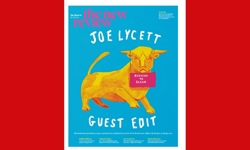In previous articles, I have considered how the way(s) in which measurement is carried out impacts on the roles of newspaper marketers and, in this context, tried to lay down a strategic framework to ensure that resources, processes and opportunities are understood and as well-aligned as possible.
Having done this, it makes sense to focus this time on the sharp end - or delivery. By this, I don’t necessarily mean the act of connecting readers with the product in their homes. No, by delivery we mean the ways in which newspapers are (or should be) organising themselves to meet the challenges of today.
Use of the phrase ‘best practice’ has been intentionally strictly limited throughout this piece as it can be somewhat subjective and does not take into account the richness of diversity that exists in regional press. If you come across it please bear with me, understanding that whatever it is I’m referring to has produced positive results where implemented - not that I am promoting it as the Holy Grail for the entire industry!
Research
So, that said, what is happening out there? The product seems like a good place to start. And what should the product reflect? What people want to read, hopefully! But how do we know? With readership research only taking place (for those that do it) every two to three years it is increasingly difficult to keep fingers on pulses in a dynamic world. A number of publishers are starting to look towards recruiting reader panels, reflective of the demography of the area and readership patterns. These people agree - usually for a token fee - to be contacted regularly for feedback on anything; eg. how a particular story was covered, what is being discussed ‘down the pub’, their views on a proposed re-design of TV content, how easy it had been to get the paper last time they bought it etc etc. As this can be done online, by email or telephone it is cheap and gives instant feedback. Managed in tandem by newspaper marketers and the editorial team, this can be an important tool in anticipating changes in customer needs and wants, rather than - as often happens currently - simply trying to close the sale after the customer has bolted! And this partnership element is vital in all aspects, not just management of research. Simply saying that editors and newspaper sales and marketing directors are working closely together and singing off the same hymn sheet is no use if the historical divides still exist. Is the best solution, then, to make them one and the same? A single brand champion as is the case for many other blue chip FMCG products…
Editions
Editions remain as hot a topic as ever. We are still seeing launches of (relatively expensive but effective) specifically local editions in areas that were previously felt to be ‘out of core’. The launch of the Peterlee Mail from its Hartlepool namesake certainly created extra demand and is part of the reason for its strong recent ABC showings.
Working partly on the theory that people no longer necessarily expect their newspaper to break the news but instead to provide enhanced coverage of it with a local angle when they have time to read it, the Manchester Evening News now has its overnight edition, which is distributed via wholesale and available alongside the mornings. The Liverpool Echo did the same on a Saturday - at the same time discontinuing its sports results title whilst enhancing the overall product package. Both have reported positive results.
So is it about localness or time to market? A recent JICREG survey revealed that 87% of respondents said the paper was available early enough to make it convenient for them to buy if they chose to do so. 7% wished that it were ‘regularly’ on sale earlier. So which group do we cater for? The answers are still unclear but few of the recent examples of changing edition times or structures seem to have had a negative result in isolation.
The retail environment is changing, and with it, the need to deploy our resources differently. As a result a number of publishers have adopted a key account mentality in place of the traditional sales territory approach.
Delivery times
If we don’t actually know when people buy or would like to buy then our distribution methodology might as well remain as uncomplicated as it currently is. A growing proportion of our outlets are utilising EPOS. Do we have access to this data, the in-house expertise to analyse it and can we perhaps seek to assist in the further rollout of this technology? Experts in distribution logistics live or die by their ability to deliver ‘just in time’; have we ever looked outside of the regional press industry for best practice and systems?
In 2004, the News & Star in Carlisle undertook painstakingly detailed research, outlet by outlet as to peak customer traffic periods and has re-structured its distribution accordingly. Vans often now drive past one or more outlets on a journey, delivering to a time sensitive; not geographically easy route structure. Since this was introduced, a 2% deficit in Jan-Jun 04 was turned around - like for like - by 4 percentage points.
Of course there is more to it than simply getting our chosen editions to our existing outlets at the optimum time. We need to track our potential readers and make it easy for them to buy wherever they are. This means exploring non-traditional business relationships, and selling in new and previously unheard of places. This may not be highly efficient but can be effective, as demonstrated by the business development team at Bradford where new sales in offices, work canteens and the like accounted for over 1% of total sale within a short time from the launch of the scheme.
Pricing
The trends in pricing are interesting, with a general shift towards more bullish top line cover prices being leveraged, particularly by the big plc groups. This is in response to the fact that little evidence exists to prove that limiting increases has had any noticeable effect on the steepness of the volume decline curve for daily titles. So, in taking this course of action additional funds might be freed up to re-invest in the products and the marketing of them. But as soon, of course, as other income streams tighten this pot of gold becomes a soft target for necessary cost improvement plans and the reader left paying more for….possibly less.
Paradoxically, the advent of the ‘Lite’ titles suggests an emerging acceptance that audience delivery in itself is becoming more important than generating a cover price in the process of doing so.
Tactical use of pricing to promote product trial, increase frequency and move readers up the loyalty ladder at a pace acceptable to them is fast gaining credence as something of the middle ground in this debate. A number of newspapers have enjoyed remarkable conversion figures when making voucher-based propositions based on current purchase levels. Even selling at, say, 15p is a profitable way of delivering a segment of audience when compared with the decision to distribute the content for free. And, of course, this approach has the added benefits of generating an ongoing, named relationship with the consumer and the valuable data that accompanies it.
Promotions
Faced with (generally) declining overall budgets, the job of the sales promotions manager is becoming even more challenging. What does offer best return on investment whether that is money or time? Much has been written in this publication about the effectiveness of newsbills and the proof that this activity definitely does drive the sale of newspapers. All I would add to that is: don’t just do it, do it well. The newspapers that take the process seriously from copy writing, selection, production and targeting to distribution and display are those achieving the best results.
Interesting trends in promotions activity in regional press centre on a shift away from major prizes towards an added value, something for everyone mentality. Linked to this are issues around social responsibility and charitable giving. In terms of entry mechanics, daily play or certainly the option to take part whilst buying periodically are beginning to replace the rigid ‘collect 36 differently numbered tokens across a 6 week period’ approach. One of the biggest success stories in terms of redemption and impact on sale has been seen by the £10 and £15 travel offers made by rail operator GNER with a number of newspapers on its route. Year on year sales increases of above 5% during the period seem to have been directly attributable to the activity in each case.
And to finish this whistle-stop tour of best practice and delivery from around regional press I return (symmetrically) to the point at which we began - product. Product, linked though to sales promotion. I’ll bet my last £5 (sorry, it’s gone - spent it on a pint and a packet of crisps to help get the creative writing juices going) that you know pretty much what you spend on canvassing, newsbills, promotional activity, research…I could go on. But do you know how much you spend promoting your platforms, products and services in your own and sister titles? How many column cms? At what SCC rate? Is it properly controlled? Are you giving it anything like the attention you give the other elements of your activity? If you have answered ‘yes’ to even one of those, then my apologies. In general, however, I think it is fair to say that despite probably representing your biggest single element of above the line 'expenditure', this is a subject our industry fails to manage with the same rigour as other elements of the promotional mix. Changing this mentality can pay substantial dividends.
Overall, there is a myriad of items in the best practice toolkit. Your task - should you choose to accept it, of course - is to select the right ones for your job, your product(s), your marketplace and then…deliver.
FEATURE
What’s the meaning of life, best practice, delivery et al?
When you hear the word “delivery”, do you think of vans or mission statements? Russell Borthwick thinks that responsibility for delivery stretches deep into the organisation. Here he looks at how some publishers are changing their approach to improve their delivery.










